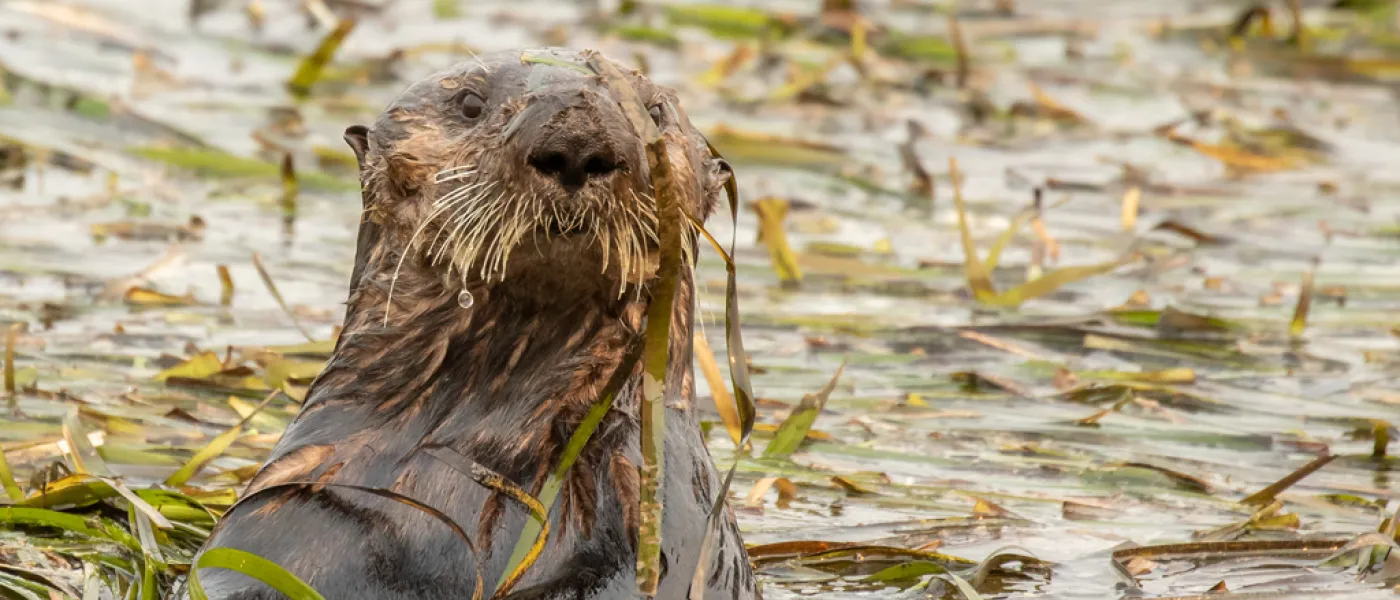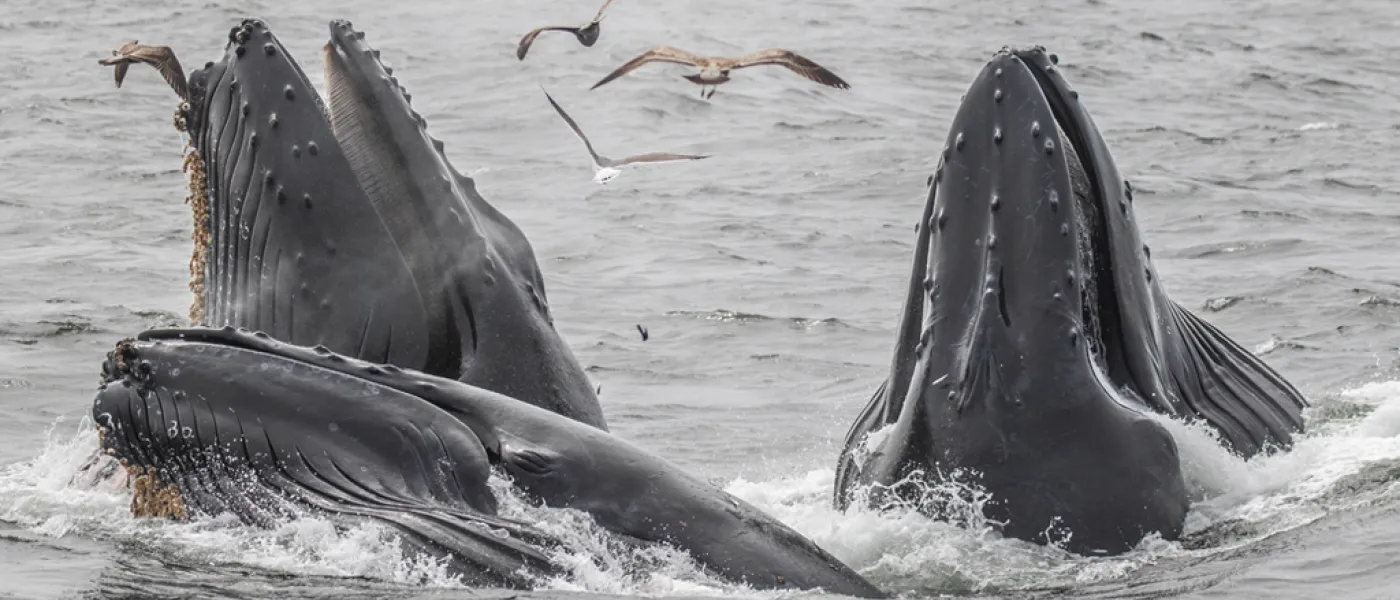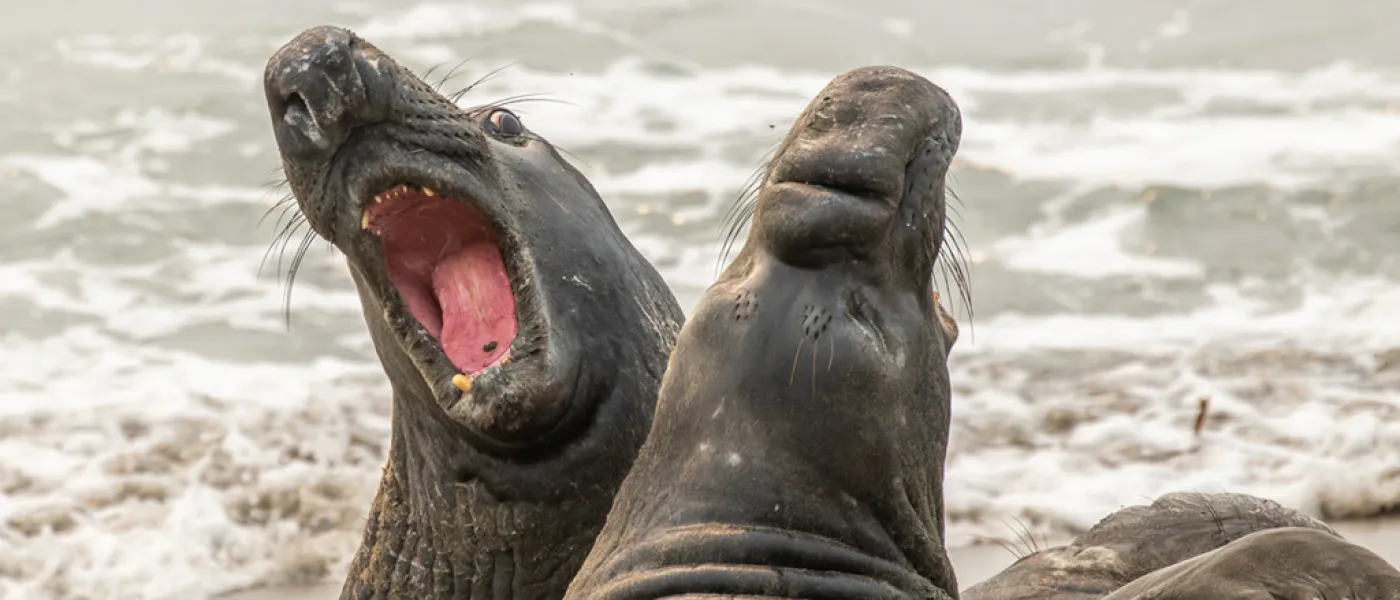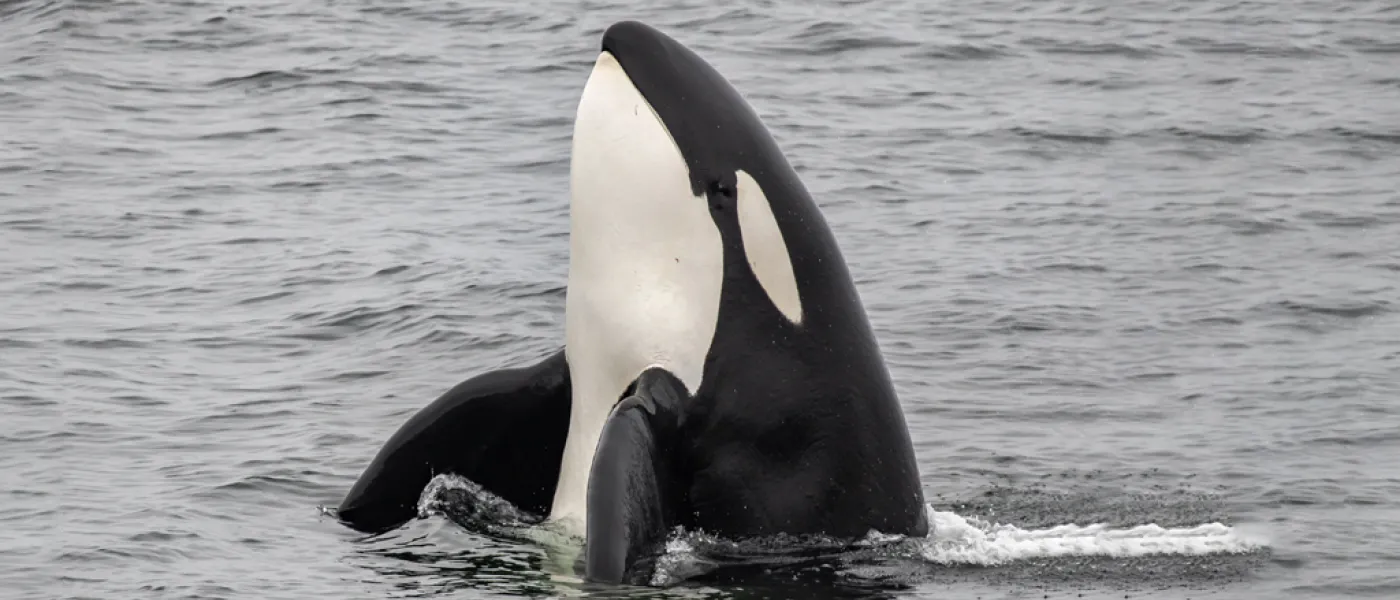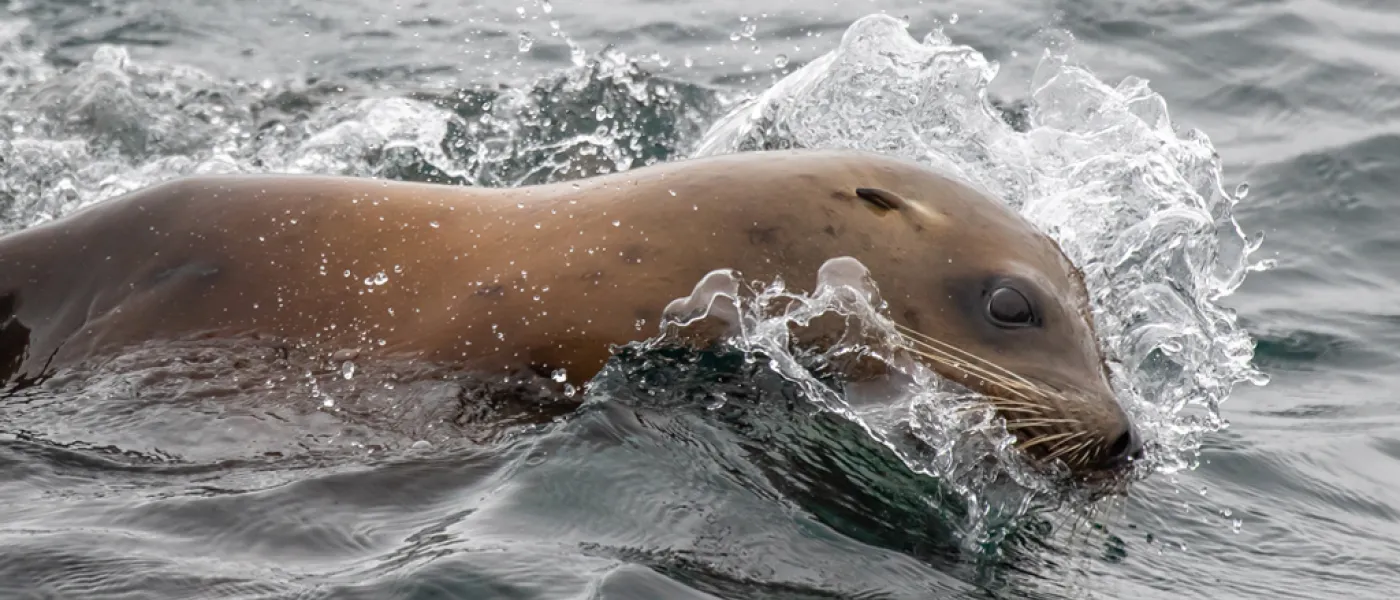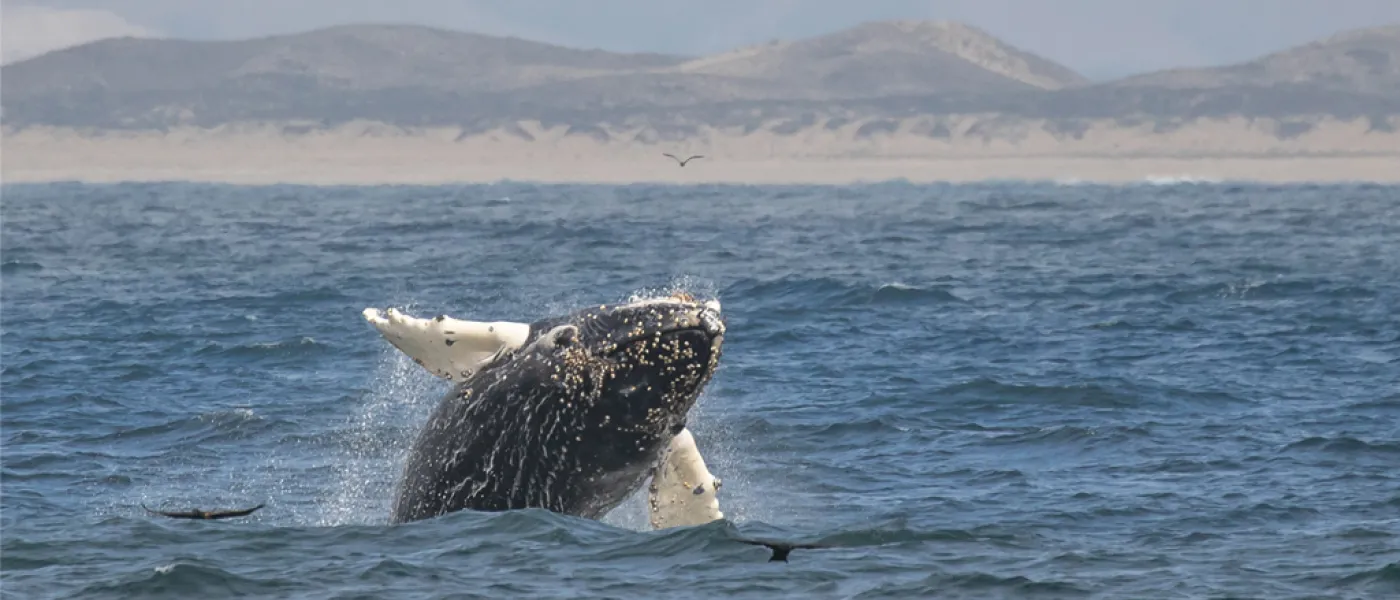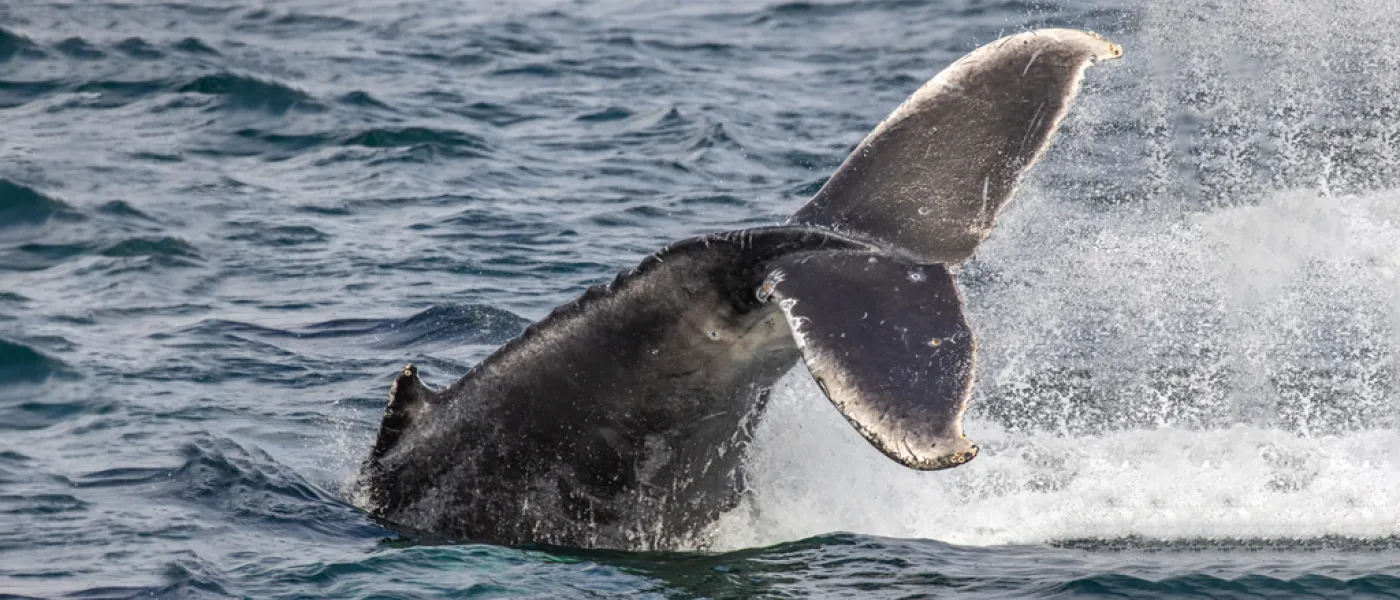Hello from Beautiful Monterey!
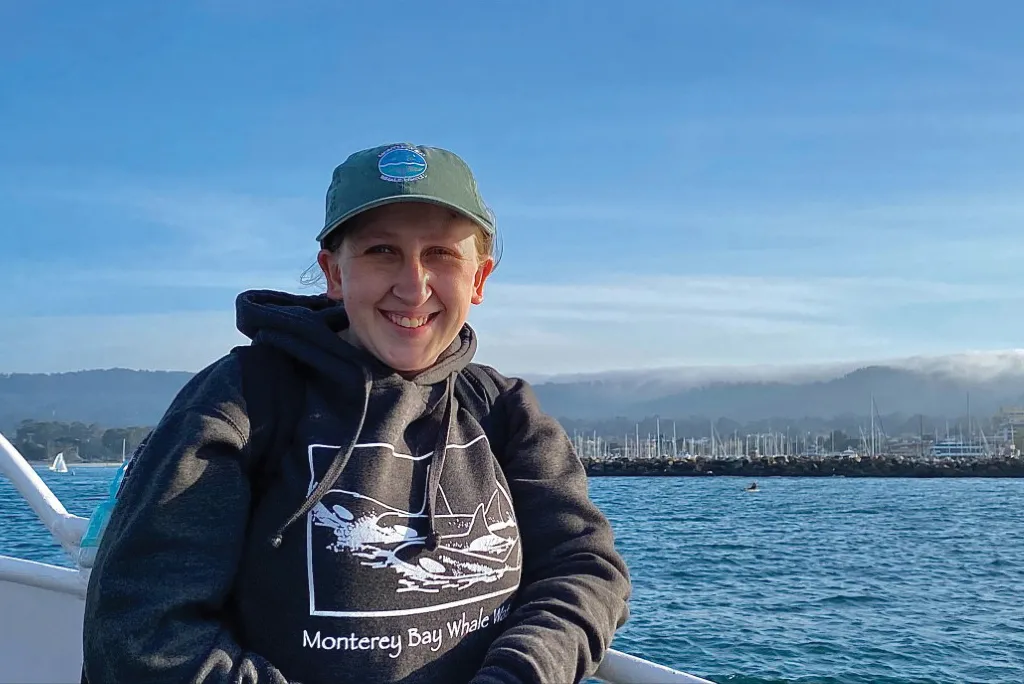
Hello! My name is Morgan Quimby, and I am currently a photo ID research intern with Monterey Bay Whale Watch in Monterey, California. My love for marine life started at a young age when I first watched the movie Free Willy and fell in love with Orcas. As a photo research intern, I capture identification photos of marine mammals to track individuals in the area and globally. Through this work, we can learn more about the species’ behaviors and ecology. So far, the experience feels like a dream come true, and I am honored to share with you through this article!
The Blackfin
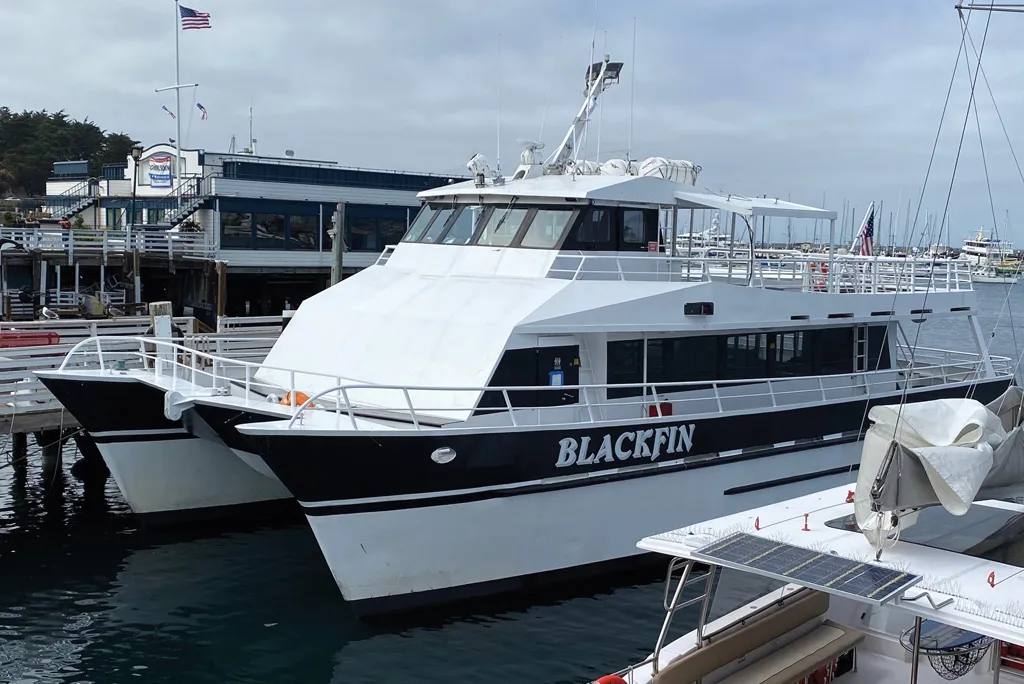
I was initially drawn to the Monterey Bay Whale Watch specifically because it is owned by Nancy Black, a killer whale research biologist who has studied the species in Monterey for over 30 years. As part of the fleet of ships, we have this beautiful 65-foot catamaran (double-hull) called the Blackfin. It is the main ship that I conduct whale research on. Typically, I am either at the counter writing down data or out on the bow of the boat taking photos.
A Delightfully Odd Fish
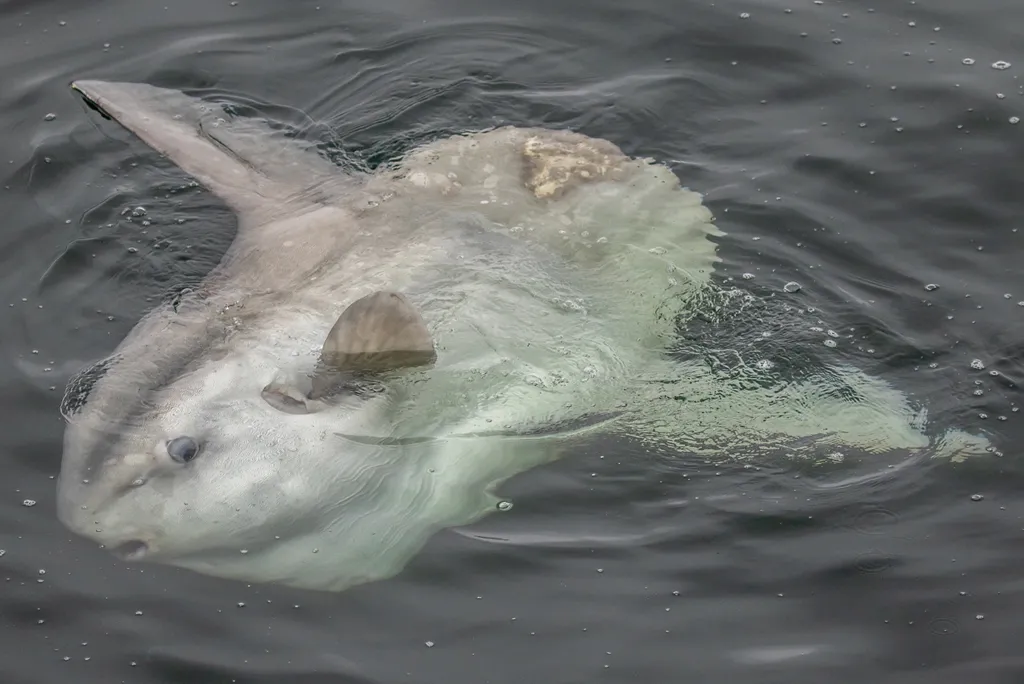
The Mola mola, or ocean sunfish, is the kind of creature you need to see to believe. This was the first Mola mola I’d ever seen in person, and it just made me smile. These goofy-looking creatures are the world’s largest bony fish. They are quite clumsy swimmers and are often seen at the water’s surface basking in the sun, hence their name. Their teeth are formed into a sort of beak, and their mouths are permanently open. It is always exciting to see a new species for the first time. Judging by the eye contact we got from him throughout the encounter, our boat was quite the sight for him too!
Wild Orca Pod
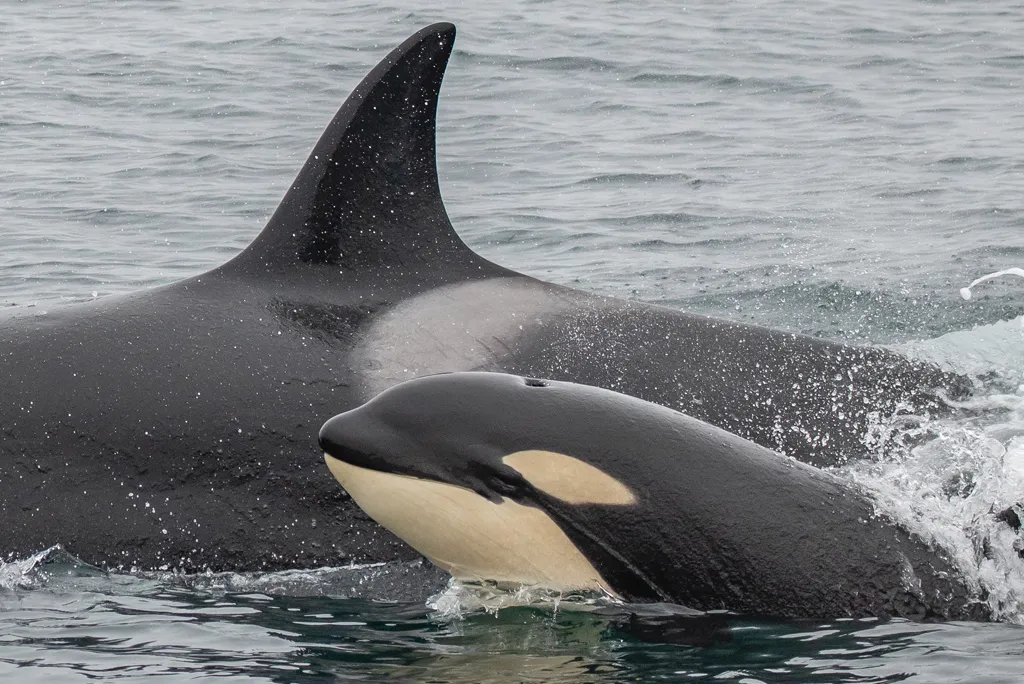
We spent one and a half hours with this orca pod of seven to eight individuals about 14 miles from the shore in Monterey Bay. It took me days to process the emotions of this incredible encounter. I have officially crossed off the top item on my bucket list. Anyone who knows me well knows that my favorite animal is the orca/killer whale. Not only did I see orca in the wild for the first time, but I witnessed something truly rare and special. My first view of a wild killer whale was a massive male fully breaching out of the water. Then we watched as they dragged a Risso’s dolphin by the fluke below the surface and shared the prey among all members of the pod. This is only the second time in 35 years of orca research in the area that a pod has been seen hunting Risso’s dolphins. This was an experience I will truly never forget!
Taking Identification Photos
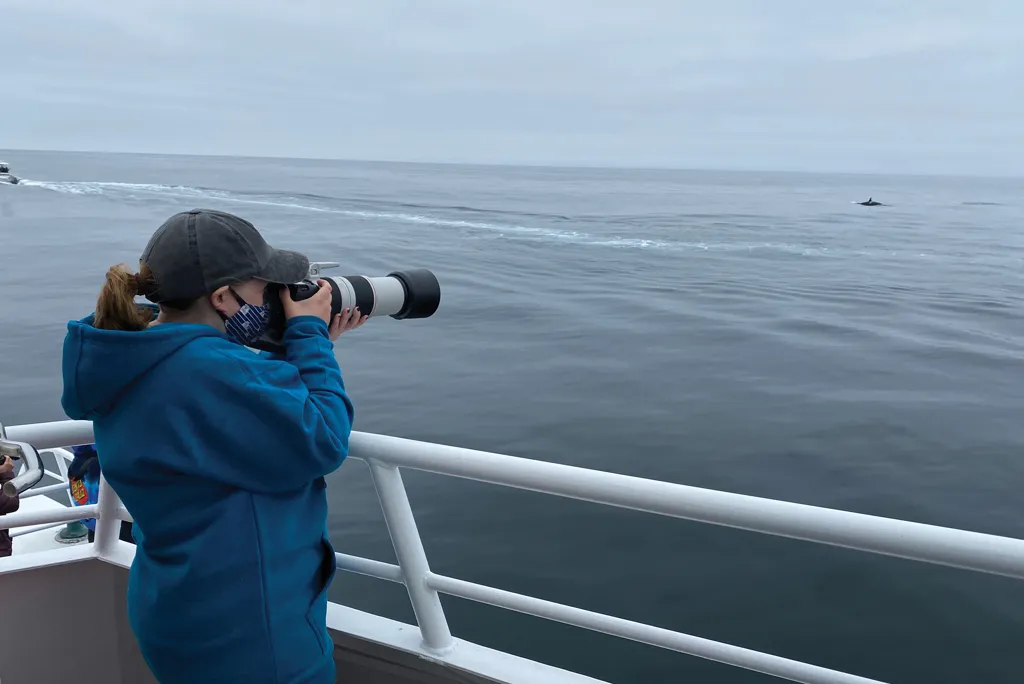
Here I am photographing the unique pod of killer whales that we witnessed preying on a Risso’s dolphin. To track and study individual whales, we need to capture and catalogue photos of certain parts of the animal and learn to recognize who is who. With killer whales, capturing photos of their white eye patches as well as their white “saddle patches” behind their dorsal fins is key to identifying which orca we are observing. For humpback whales, it is important to capture photos of the underside of their tail flukes. Each individual fluke is unique — sort of like the whale equivalent of a human fingerprint. The patterning of white and black, along with scars and barnacles, help us to identify each humpback whale we see.
Breaching Humpback Whale Calf
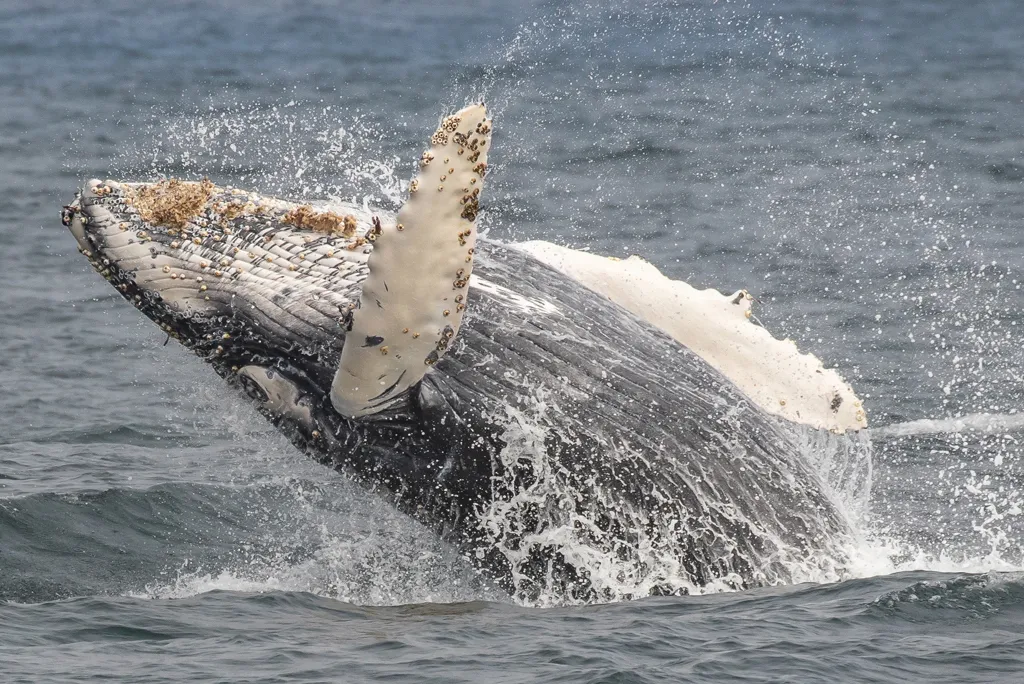
This happy humpback whale calf is named Google. She has become quite the local celebrity due to her playful and energetic nature. While her mom is down below the surface feeding and resting, young Google enjoys approaching boats to get a closer look. On this particular day, Google put on quite the show. She approached the boat several times, watching us as she glided by under the surface, and breached over 100 times while we watched in awe! While breaching can serve many purposes, and we don’t know 100% for certain why they do it, it seemed clear that young Google was feeling playful and building up muscle.
Southern Sea Otter Mom and Pup
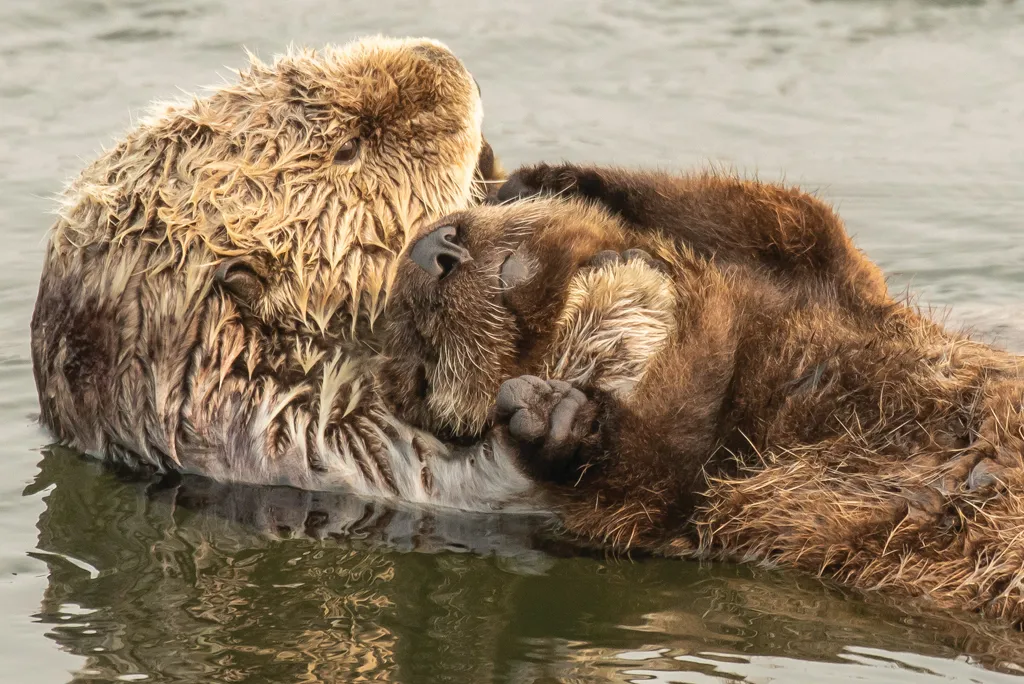
Towards the beginning of my time here in California, I observed and photographed four mother and pup southern sea otter pairs in Morro Bay. It is hard not to have a constant smile on your face while watching a mother and pup interact. The pups in this little nursery group were getting to a size where they seemed too big for mom’s lap. When the mother isn’t diving down for food while her pup waits patiently at the surface, she is tending to her coat and her pup’s coat to keep them both dry. When observing wild sea otters, it quickly becomes evident how attentive an individual must be to its fur to stay dry and warm. When they aren’t eating or sleeping, an otter is grooming its precious fur coat.
Sydney and I with Elephant Seals
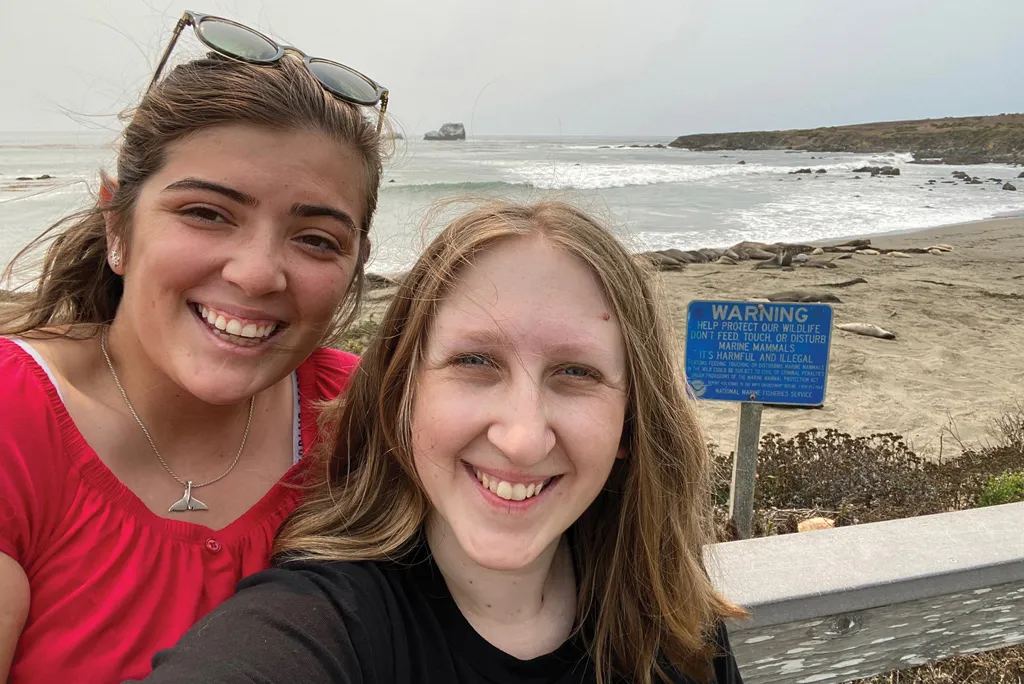
My friend Sidney and I first met at UNE! She was my tour guide for Accepted Students Day, and as soon as I saw the orca keychain on her backpack, I knew we would be friends. We are both passionate about marine mammals, so we were both over the moon with excitement when we both got internships involving marine mammals for this summer/fall. Prior to starting my internship at Monterey Bay Whale Watch, I visited Sidney in her hometown of Santa Barbara, California. I really enjoyed spending time seeing where she grew up, and we also got to visit the elephant seals of San Simeon (seen in the background of this photo).
Bonus Content: Photo Gallery
